Cloud Computing: All-Cloud, All-the-Time.
- Tommy Wald

- Aug 26, 2023
- 4 min read
Updated: Aug 28, 2023
Transitioning to an all-cloud network.
If you’re reading this, you have probably already moved parts of your business into the cloud, such as your email, website, storage and phone system. And you most probably are also considering moving all of your business into the cloud, if you haven’t already.
Either way, read on as this blog is for you.
The transition to cloud is a trend that is increasing rapidly. At RIATA, our IT consultants have been busy with migrating clients to the cloud, and also from cloud-to-cloud. Most are moving to this all-cloud computing model to eliminate the need for file servers in the office; which are expensive to buy and maintain.
Moving away from traditional on-premises file servers allows you to embrace the power of cloud computing and leverage the flexibility, scalability, and cost-efficiency of this approach.
In this blog, I’ll discuss the key considerations for business owners when transitioning to an all-cloud computing model, including discussions about migrating between popular cloud platforms, cybersecurity concerns, cloud storage, mobile device management, and work-from-home considerations.
The Shift to All-Cloud Computing
Cloud computing offers many benefits and advantages.

First, it eliminates the need for investing in and maintaining costly physical servers, while providing access to the scalable power of virtual servers and eliminating costly investments in equipment, power and facilities.
Secondly, this all-cloud model allows businesses to scale up or down seamlessly, while ensuring computing resources match the demand.
And lastly, collaboration becomes more efficient, as your team can access data and applications from any location, anywhere, and at any time.
Migrating to Cloud Platforms: Azure and Google Workspace
When considering a move to an all-cloud environment, business owners often contemplate whether to migrate to Azure or Google Workspace (formerly G Suite). Each platform has its strengths and choosing the right one depends on the unique needs of the business.
For example, Azure, Microsoft's cloud service, is a robust option for businesses heavily reliant on Windows-based applications and looking for deep integration with Microsoft software.

On the other hand, Google Workspace is lauded for its user-friendly collaboration tools, ease of use, and compatibility across devices and operating systems.
The key issues to consider include:
Data Migration and Compatibility: Migrating data from one cloud platform to another requires careful planning to ensure data integrity and minimize disruptions. Compatibility issues between different platforms can arise during migration, necessitating data restructuring or application adjustments.
Training and Adoption: Transitioning to an all-cloud model may require your staff to learn new tools and workflows. Providing adequate training and support is crucial to maximize productivity and avoiding resistance to change.
Cost Management: While cloud services can offer cost savings, they can also lead to unexpected expenses if not monitored closely. In the cloud, virtual file servers can be optimized to run only during the times your business needs it, versus 7/24. This lowers the overall costs of your cloud hosting invoices.
Cloud Security
While the cloud provides numerous advantages, security concerns are more important and require more attention. It’s important to take proactive steps to safeguard data, applications, and sensitive information. This includes:
Data Encryption: Ensure data is encrypted both at rest and in transit to prevent unauthorized access.
Access Control: Implement robust identity and access management protocols to restrict access based on roles and responsibilities.
Regular Audits: Regularly assess and audit your cloud environment to identify and address potential vulnerabilities.
Cloud Storage
Cloud storage is a fundamental aspect of an all-cloud computing model, enabling businesses to store and access data securely from anywhere.
Choosing Storage Options: Different types of data may require different storage solutions. Critical data might need high-performance storage, while archival data could be stored in more cost-effective options.
Backup and Recovery: Have a robust backup and recovery strategy in place to ensure data integrity and availability in the event of data loss or breaches.
Mobile Device Management (MDM)
As the workforce becomes more mobile, managing devices accessing the cloud environment becomes crucial.

Device Security: Implement mobile device management solutions to ensure devices
accessing the cloud are secure and compliant with company policies.
Remote Wipe: Enable remote wipe capabilities to erase sensitive data from lost or stolen devices.
Work-from-Home Considerations
The recent shift towards remote work has made the cloud even more integral to business operations.
Remote Accessibility: Cloud-based applications and data enable employees to work seamlessly from home or any location, fostering productivity.
Collaboration Tools: Leverage cloud-based collaboration tools to facilitate virtual meetings, document sharing, and real-time editing.
In conclusion, transitioning to an all-cloud computing model can provide a more flexible, scalable, and collaborative approach to running your business.
However, this shift comes with its set of challenges. From choosing the right cloud platform to ensuring robust cybersecurity measures, addressing storage needs, managing mobile devices, and accommodating remote work scenarios, business owners must be well-informed and prepared to navigate this transformation successfully.
By considering these key issues and seeking expert guidance when needed, you can harness the full potential of cloud computing to drive growth and innovation in today's competitive landscape.
* * * * * *
Understanding how your business can transition to the cloud is key to streamlining and optimizing your IT. RIATA can help you develop a strategy for transitioning to an all-cloud organization and provide the service to get you there. Contact RIATA and we’ll gladly discuss your needs and ideas, and help you plan for this all-cloud transition.
About the Author: Tommy Wald is CEO of RIATA Technologies, a Managed IT Services Provider headquartered in Austin, TX. He can be reached at TWald@RiataTechnologies.com.




Comments